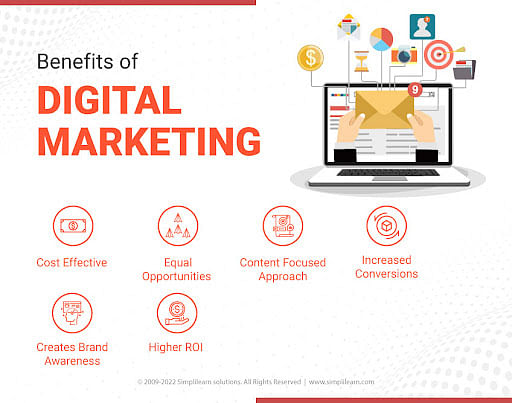Enhance User Experience and Drive Traffic With Responsive Website Design
In today's electronic landscape, where customers are accessing web sites from a multitude of tools, responsive internet layout has actually come to be more important than ever. With its ability to adapt and perfectly change to different screen sizes, responsive design not just enhances user experience but likewise drives web traffic to your web site. Why is this layout approach so essential? Exactly how does it boost individual interaction and rise site traffic? In this discussion, we will discover the crucial elements of effective receptive style, look into the finest methods for its application, and discover the secrets to enhancing customer experience while driving even more traffic to your site.
Why Receptive Web Layout Matters
Receptive web layout is a necessary aspect of modern-day web growth due to its capacity to ensure ideal user experience across different gadgets and display dimensions. With the spreading of mobile phones, tablet computers, and other smart phones, it has ended up being essential for internet sites to adapt and supply seamless performance no matter of the device being utilized.
The key reason why receptive internet design matters is that it enables customers to have a enjoyable and consistent searching experience, despite the device they are utilizing. A receptive internet site automatically changes its design, content, and design aspects to fit the display dimension and resolution of the device, making sure that customers can easily engage and browse with the internet site with no hassle or frustration.
Furthermore, receptive website design also plays a considerable function in search engine optimization (SEO) Online search engine, such as Google, prioritize websites that are mobile-friendly and responsive in their search results. By integrating responsive layout concepts, websites can improve their exposure and position, causing raised natural web traffic and prospective customers.

Boosting Customer Engagement Through Responsive Style
Maximizing user interaction is a vital goal of receptive style, as it makes certain that users can easily gain access to and interact with site content on any gadget. With the boosting usage of tablets and smartphones, it is vital for internet sites to adjust to various display dimensions and resolutions. Receptive layout enables websites to automatically adjust their layout and material to offer a seamless individual experience across devices.
One of the main ways responsive design boosts user involvement is by reducing lots times. With a receptive internet site, customers do not have to wait on separate mobile versions to lots, causing much faster accessibility to material. This enhanced rate brings about greater individual contentment and urges them to spend more time on the site.
In addition, receptive style enhances customer involvement by enhancing navigation and interface (The Ad Firm digital marketing). When a web site is designed responsively, buttons and food selections are enhanced for touch interactions, making it less complicated for individuals to engage and navigate with the website on their smart phones. This intuitive and straightforward experience maintains users involved and motivates them to explore even more of the site
Furthermore, receptive design permits for much better content presence and readability. By adapting the format and typeface dimensions to different tools, responsive websites make certain that individuals can easily review and understand the web content. This enhances user engagement by minimizing the requirement for zooming or scrolling to review the text.
Boosting Website Website Traffic With Responsive Web Style
With the growing popularity of smart phones, having an internet click here for info site that is receptive to different screen sizes and resolutions is important for driving enhanced web traffic. In today's electronic landscape, individuals are accessing web sites from a range of gadgets such as smart devices, tablet computers, and home computer. Each of these gadgets has different screen sizes and resolutions, and if your site is not developed to adapt to these variations, it can lead to a poor user experience and a loss of potential website traffic.
Receptive internet layout ensures that your website looks and operates ideally throughout all gadgets. By utilizing versatile grids, fluid images, and media questions, receptive layout allows your web site to immediately adjust its navigation, web content, and design to fit any type of screen dimension. This suggests that individuals will have a smooth surfing experience despite whether they are utilizing a small smart device or a big desktop computer.
Crucial Element of Reliable Responsive Layout
Reliable receptive style includes several essential aspects that ensure a seamless individual experience throughout different gadgets. This enables content to be presented in a understandable and aesthetically enticing manner on any type of gadget.
An additional important aspect is media questions. These allow designers to use various styles and layouts based upon the characteristics of the individual's gadget, such as screen size and positioning. By making use of media questions, developers can optimize the presentation of material for each gadget, making certain that it is readable and easily accessible.
Responsive images are also important in efficient receptive style. Pictures that are as well big can decrease page load times on mobile phones, while images that are too tiny might show up pixelated on bigger screens. By utilizing strategies such as receptive picture resizing and lazy loading, designers can guarantee that images are appropriately sized and optimized for each tool.
Last but not least, reliable receptive style involves a mobile-first method. This indicates creating and focusing on content for mobile phones initially, and afterwards improving the design and increasing for larger screens. This strategy makes sure that the most important web content is quickly obtainable on smaller sized screens, while still giving a rich experience on bigger gadgets.
Best Practices for Applying Receptive Website Design
Executing receptive web layout needs mindful factor to consider of various ideal practices to make certain an ideal visit the site user experience throughout different gadgets. Here find are some crucial best methods to follow when carrying out responsive internet layout.
To start with, it is vital to prioritize mobile customers. With the enhancing prominence of mobile phones, designing for mobile-first has ended up being important. Beginning deliberately for smaller sized screens and after that progressively improve the layout for larger displays.

One more important ideal practice is to maximize images for various screen resolutions. Huge images can decrease the loading time of your web site, especially on smart phones with slower connections. Usage responsive pictures that can be resized based upon the gadget's display resolution to improve efficiency.
Additionally, test your web site on various tools and display dimensions to guarantee a constant and seamless experience. There are numerous testing tools readily available that can assist you recognize any problems and make essential adjustments.
Finally, focus on usability and availability. Ensure that your site is very easy to browse, with concise and clear web content. Make sure that your site is easily accessible to individuals with disabilities and complies with access standards.
Conclusion
In final thought, receptive internet layout plays a vital role in enhancing individual experience and driving web traffic to internet sites. By taking on receptive design principles, sites can guarantee ideal checking out experiences throughout various tools, bring about enhanced user interaction (The Ad Firm web design agency). Additionally, receptive style can likewise contribute to higher website traffic as it boosts search engine positions and facilitates very easy sharing of web content. For that reason, services should focus on applying the crucial elements and finest practices of receptive layout to successfully meet the demands of modern-day individuals.
Enhancing customer involvement is a crucial objective of receptive design, as it makes certain that individuals can conveniently access and engage with website material on any kind of gadget. Receptive layout allows internet sites to automatically change their format and content to supply a smooth user experience across tools.
In addition, responsive style boosts customer engagement by enhancing navigating and customer interface.Responsive images are likewise critical in effective responsive style. By taking on receptive design principles, sites can make sure optimum viewing experiences across different devices, leading to enhanced individual involvement.